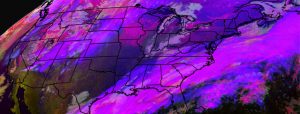
Both a mist and a fog are water droplets suspended in the atmosphere in the vicinity the earth’s surface that affect visibility.
They both differ from a cloud only in that the base of a fog or a mist is at the earth’s surface, while a cloud’s is above the surface.
The difference between a mist and a fog is associated with the atmospheric visibility. A fog and a mist are both composed of microscopic water droplets or wet hygroscopic particles suspended in the air. Particles cause light to be refracted and reflected in many directions, reducing visibility.
By international definition, a fog reduces visibility to below 1 kilometer (5/8 of a mile), while a mist occurs when the visibility at the earth’s surface is greater than 1 kilometer. These visibility observations are made at ground or sea level.
A fog is denser and thicker than a mist. Consequently, it is more difficult to see through a fog than a mist. A mist dissipates more quickly than a fog. In addition, the term “mist” is used in weather reports when the corresponding relative humidity is between 95% to 100%.
Haze is a related but slightly different phenomenon. Haze is a suspension of extremely small particles in the air, reducing visibility by scattering light like a fog and a mist. Haze formation is caused by the presence of an abundance of condensation nuclei which may grow in size, due to a variety of causes, and become a mist, a fog or a cloud.
Steve Ackerman and Jonathan Martin, professors in the UW-Madison department of atmospheric and oceanic sciences, are guests on WHA radio (970 AM) at 11:45 a.m. the last Monday of each month. Send them your questions at stevea@ssec.wisc.edu or jemarti1@wisc.edu.

